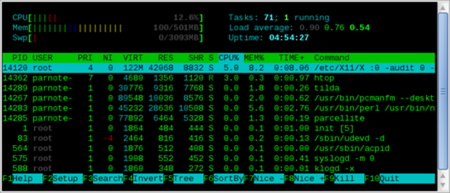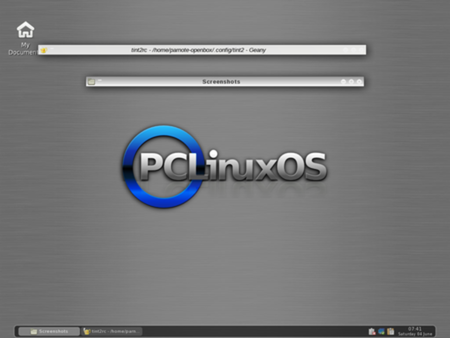Openbox - An Overview
By Paul Arnote (parnote)If you are like most PCLinuxOS users, you have an old computer stuck back in a closet. Like most PCLinuxOS users, you cannot bear the thought of an older computer that has any life left in it sitting idle, especially if you can find a good use for that computer.
Openbox can resurrect and re-purpose that old computer that’s just gathering dust in the back of that closet. With minimal hardware requirements, Openbox can breathe new life into that old computer, and provide a very usable second computer.
History & Background
To get a real feel for the history of Openbox, you have to go back in time to a point before Openbox came to fruition. Openbox was originally derived from the X window manager Blackbox. Blackbox was created in 1997 as a lightweight X window manager, and was written in C++ with entirely original code. Along about Blackbox 0.65, Openbox was spun off, and is written entirely in C.

Openbox, currently at version 3.4, has been devoid of any remaining Blackbox code since version 3.0. The Openbox project is written primarily by Dana Jansens of Carleton University in Ottawa, Ontario, Canada. Openbox also serves as the window manager for the LXDE desktop environment.
Putting It To Use
I have installed Openbox on an IBM Thinkpad T23, running a Pentium III 1.13 GHz processor, with 512 MB RAM, and a S3 SuperSavage IX/C graphics card with 8 MB video RAM. To say that the T23 is fast and responsive running Openbox is an understatement. With the low CPU demands and low memory overhead of Openbox, the T23 acts like a new computer. I can only imagine how fast and responsive Openbox is on a newer computer with a faster, more modern processor and more memory.

Of course, I have fully updated my system, since the latest Live CD is from November, 2010. I am running the 2.38.x kernel, along with X.org 1.9.5. Above is a screen shot that shows my CPU and memory usage. These values are after all the tweaks I’ve applied to my Openbox installation. For example, I’m running tilda in the background, and using gnome-power-manager as my battery notification and power manager. Tint2, a lightweight panel replacement, serves as my panel. All information comes from running htop at the command line prompt in tilda.

Above is my tweaked Openbox desktop, displaying a custom wallpaper I created a few years ago. I’ve applied a custom Openbox window theme, called Appleish. After my tint2 configuration took a nosedive, I went with the default tint2 configuration – of course, with a few custom, handmade tweaks to the tint2 configuration file.
Summary & Things To Come
The PCLinuxOS Openbox ISO, created by PCLinuxOS community member melodie, is rock solid. It goes a long way to breathing new life into an older computer you may have lying around. Will it make your Pentium III with 512 MB RAM behave like a new computer with a quad-core processor and 4 GB RAM? Certainly not. But then again, you will have another computer running PCLinuxOS, and one that can do service as a media server, or as a computer that does the “basic tasks” (like checking email, creating documents, browsing the web, etc.) very, very well.
Openbox is not for beginning Linux users. Tweaking and tuning Openbox involves, in many cases, hand editing various configuration files that are tucked away in your Linux file system. In keeping with the lightweight nature of Openbox, there aren’t a lot of GUI tools available to assist with the management of those files, as there are with the bigger and heavier full-blown desktop environments like KDE and Gnome. But if you ever wanted to learn more about Linux and how it all comes together, learning the ins and outs of Openbox will be help you along that path. If you are a power Linux user, then you will feel right at home with Openbox, and with making all of the manual edits to the configuration files to tweak and tune your Openbox installation.
One difference that I did notice was the inclusion of sudo in the PCLinuxOS Openbox ISOs. Traditionally, sudo is NOT included with official PCLinuxOS releases, since an improper use of sudo could compromise the security of a computer it is being used on. In somewhat of a defense, there is not a user predefined in the sudoers file. Still, it has become pretty much standard operating procedure for PCLinuxOS to not embrace the use of sudo. Having sudo pre-installed gives the opposite impression.
As we here at the magazine explore Openbox, we’ll be bringing you articles on ways to customize your PCLinuxOS Openbox installation. Hopefully, these articles will show you the elegance, simplicity and various uses of Openbox, as well as ways you can customize and tailor your Openbox installation.
Through the articles we have planned, we hope that we take the “sting” out of configuring Openbox, and show you the options you have for tweaking Openbox. As you will see, it is actually quite easy to make your Openbox installation quite unique.

